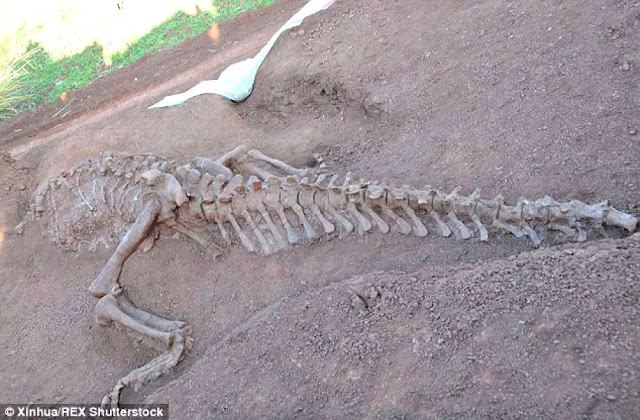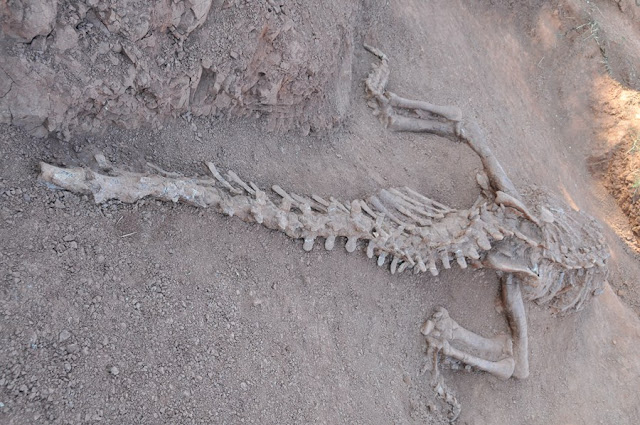Fossils of TWO 180 million-year-old dinosaurs unearthed beneath road in China
The fossilised skeletons of two long-necked dinosaurs which were up to 30 feet long have been unearthed by workers building a road in China.
The fossils are thought to be the remains of Lufengosaurs magnus and Lufengosaurus huenei – herbivores which roamed the Earth around 180 million years ago.
They were discovered just 1,600 feet (500 metres) apart as workers cleared soil and rocks to make way for a new road in Lufeng County in China’s Yunnan Province.
Palaeontologists say the bones of Lufengosaurus magnus include huge complete hind legs along with much of the back bone and spine.
In total the fossil measures around 16 feet (5m) long but experts believe it may have been more than 30 feet (9m) long when alive.
Sadly it appears the head may have been eroded away by the weather.
The other fossil, of Lufengosaurus huenei, was less well preserved and featured two leg bones along with part of the tail. It is thought to have been smaller than the other creature.
Wang Tao, director of the department for geological heritage protection at the Lufeng Land Resources Bureau, said a museum may now be built over the site to preserve the fossils.
It means the road’s original route may need to be diverted around the site.
Mr Tao told the Chinese news service Xinhua: ‘The part of the fossil that has remained relatively intact is 5.3 metres long. It’s presumed to be nine metres long in complete length.
‘We will continue in situ conservation once we have built a museum at the excavation site.’
Lufengosaurus were an early type of sauropod that are thought to have lived during the Early Jurassic period.
Later sauropods were among some of the largest creatures to every walk the Earth, including Diplodocus.
Lufengosaurus were first discovered in 1938 in the region whose name they bear and since then around 30 major specimens have been discovered.
With a broad snout and mouth willed with closely spaced serrated teeth, it is thought to have lived on a diet of leaves.
It also had sharp claws, particularly on the thumb, which is thought to have been used for defense or for raking foliage from trees.
Daily Mail

